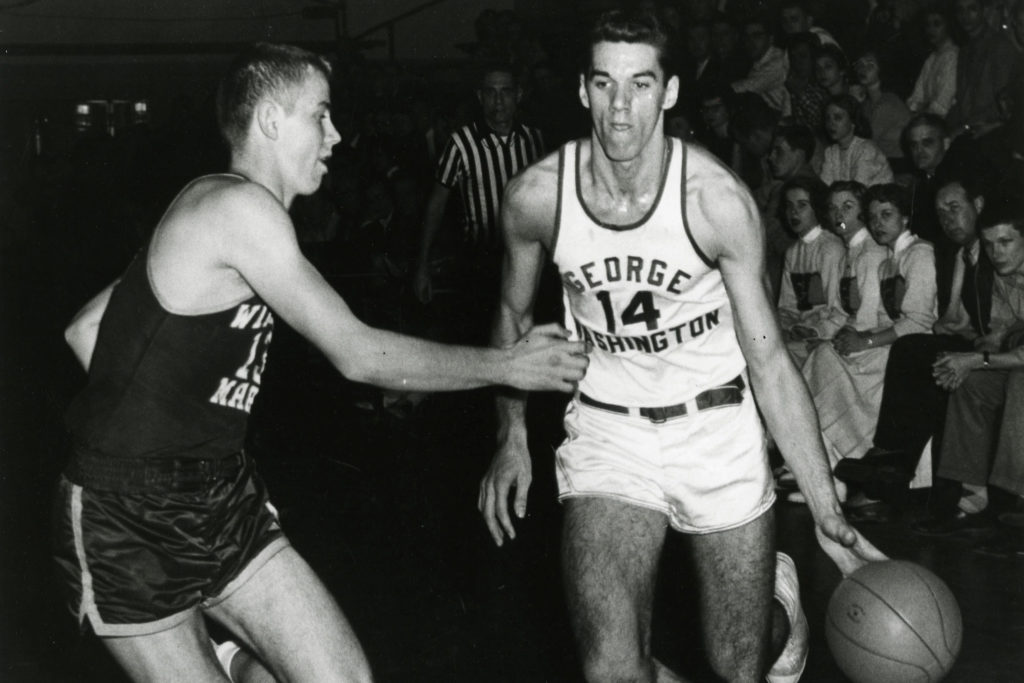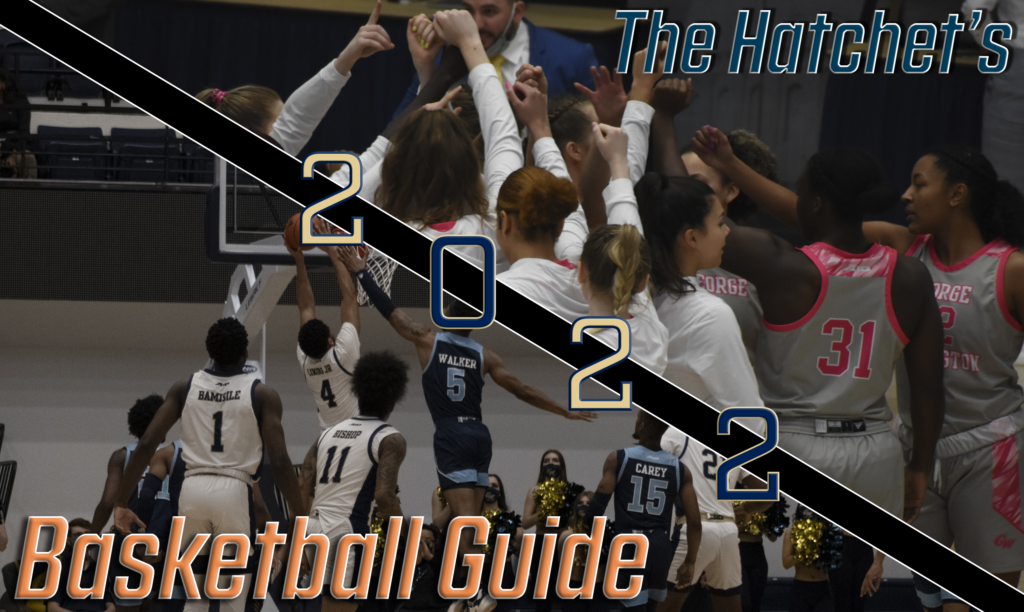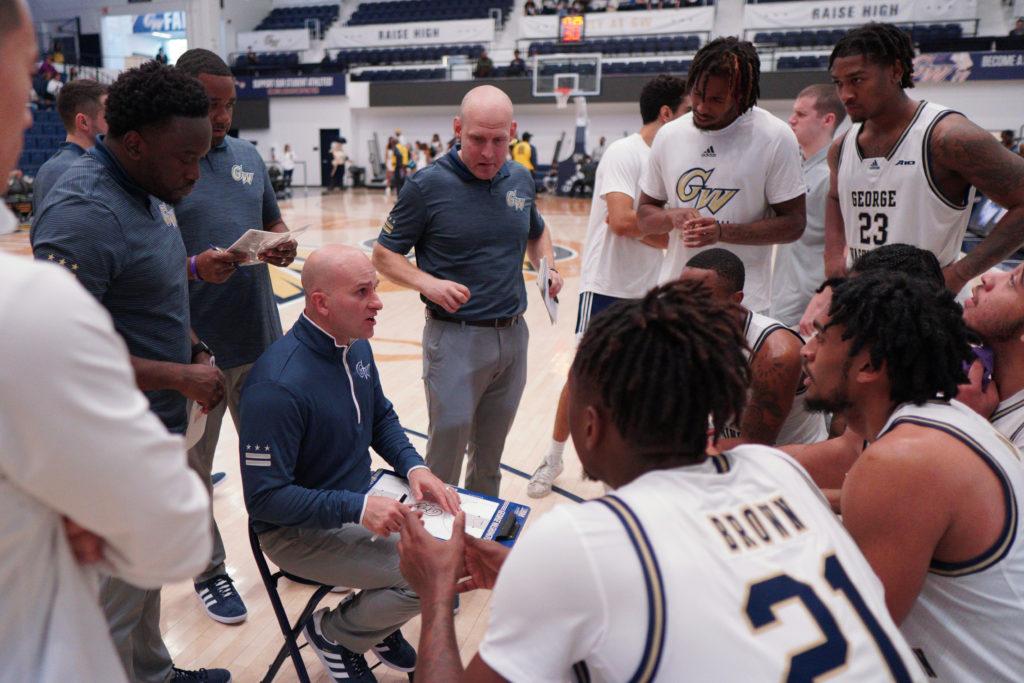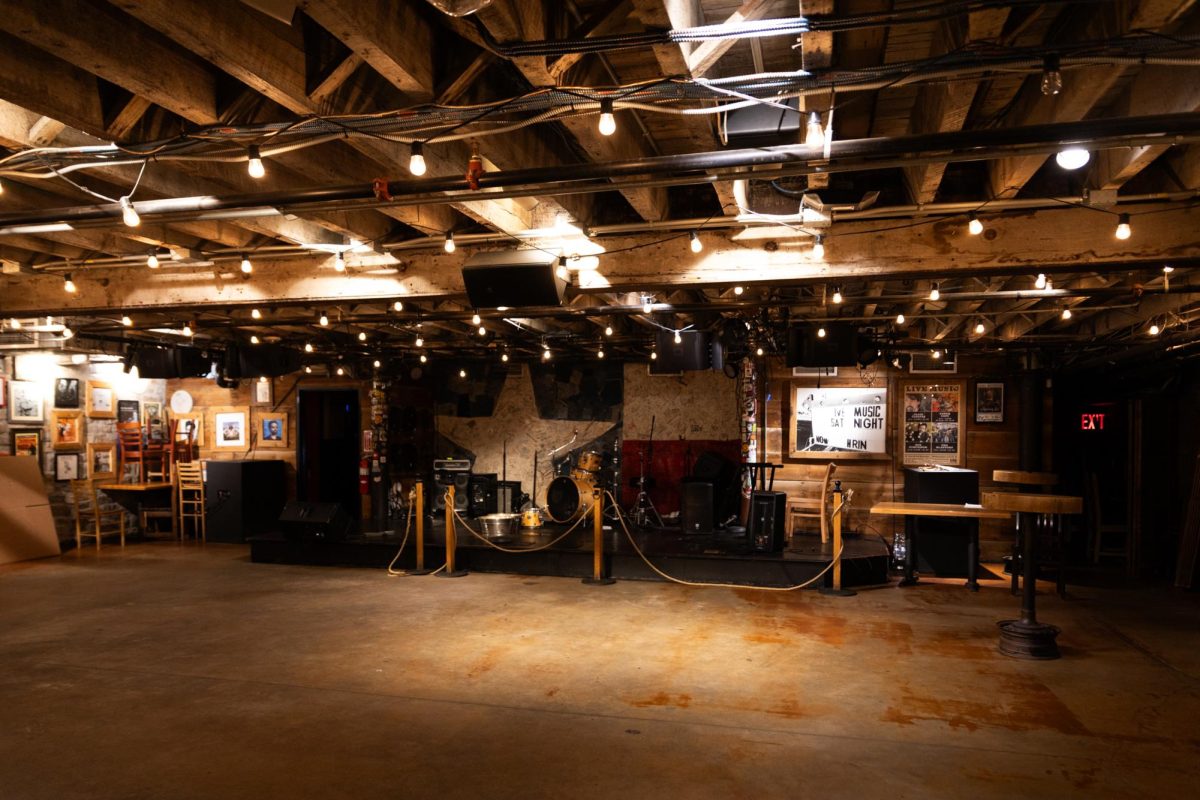It’s the peak of college basketball season, but you wouldn’t be able to tell based solely on the stands at the Smith Center during a home game.
GW’s overall lack of school spirit is not a new phenomenon – students have been voicing their frustrations on this issue for years and improving school spirit routinely appears as a platform point for many candidates for Student Association offices. We decided to take the topic up with experts in collegiate athletics to get to the bottom of GW’s lack of school spirit.
John Allgood, the academic director of the executive master of science in sport business program at Temple University, said the driving factor of school spirit for college sports is the excitement of winning.
“Winning consistently over a certain amount of time creates the demands and the excitement for that sport,” Allgood said.
GW men’s basketball started out strong in their home opener against American, but their success has dwindled in recent games. The women’s team has had a mixed season so far, winning two of the four games they’ve played so far.
Allgood said sports are especially difficult for city schools that have inherently less land to place their stadiums and training fields. Another barrier to a thriving athletic department at GW is the fact that, unlike public colleges like Temple University, GW relies on its own funding to support sport programs.
“Private schools are typically smaller, so they don’t get public funding from the state,” he said. “It’s all from donations, endowment and enrollment. So public schools are able to fund their athletic programs more than private schools.”
Despite its upper hand in subsidized funding from Pennsylvania, he said even Temple University, like GW, has had to overcome the physical barriers of being a city school. The Temple athletic department pays large sums of money to the Eagles, Philadelphia’s NFL team, so that their football program can practice on its professional football field.
“So inner-city schools have a more difficult time because of where they’re landlocked, which is unfortunately why major football and basketball powers are usually in the suburbs” Allgood said.
Ray Glier, a freelance sports reporter based in Atlanta, said the pandemic was “a big blow” to college athletic departments.
“Some sports were cut around the country,” he said. “There were sports cut because of COVID, and I don’t know that they all came back.”
GW cut seven athletics programs after the 2020-21 season including men’s rowing, sailing, men’s and women’s squash, men’s indoor track, men’s tennis and women’s water polo. But this wasn’t the first time some of the University’s sports programs were cut. GW’s football program was cut because of sparse attendance and high costs.
Glier said administrators at schools like GW struggling with school spirit have the responsibility to leverage school spirit as an attractive element of the university to prospective students.
“At a place like GW, I think you have to look at the leadership of the University and what kind of language they are using around athletics,” he said. “As long as they can boost student enrollment with athletics, they’ll do it.”
A decline in students’ interest in college sports has been documented since well before the pandemic.
Joel Maxcy, the department head of sport business at Drexel University, said D.C.’s wealth of cultural and social opportunities draws students into the city and away from activities college students may otherwise turn to for entertainment on nonurban campuses.
“If you’re asking a college student to go to a college football game, that’s a big chunk out of their Saturday afternoon or Saturday evening — three, four or five hours maybe when it’s all said and done,” Maxcy said. “And given other options and things to do with their time, it’s not as important as it once was.”
Maxcy said student excitement around college teams ultimately boils down to whether their teams are winning.
“If you have a winning team and a team that makes it to the tournament, that awakens the sleeping giant in the student body oftentimes,” he said. “That not only brings the student body back, brings the student body into more actively rooting for the team and going to games, but it extends to alumni and donors and everybody else.”
Almost six years have passed since the men’s basketball team’s last winning season in 2016-17, a long period to expect school spirit to maintain despite other factors like funding and location.
“I think, as is always the case in sports, winning matters,” Maxcy said.








